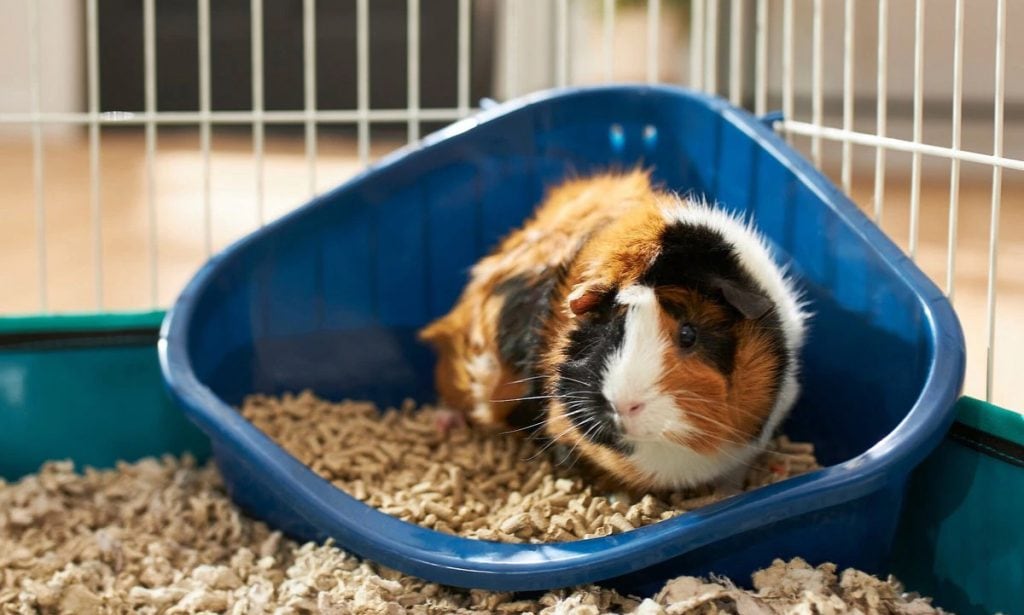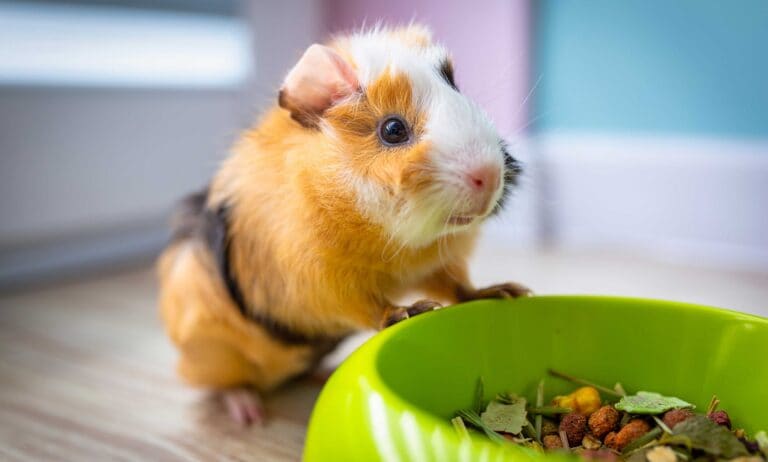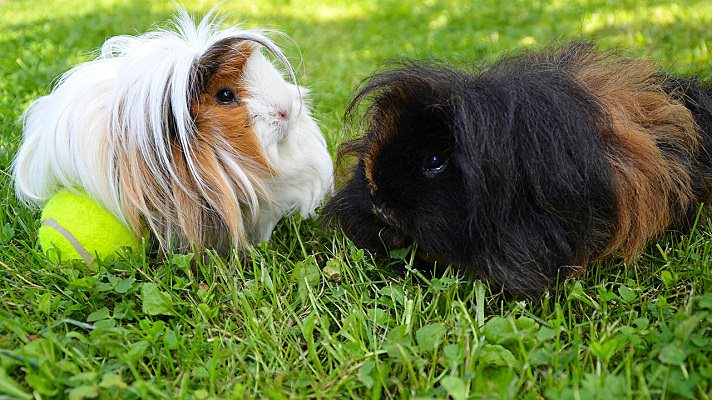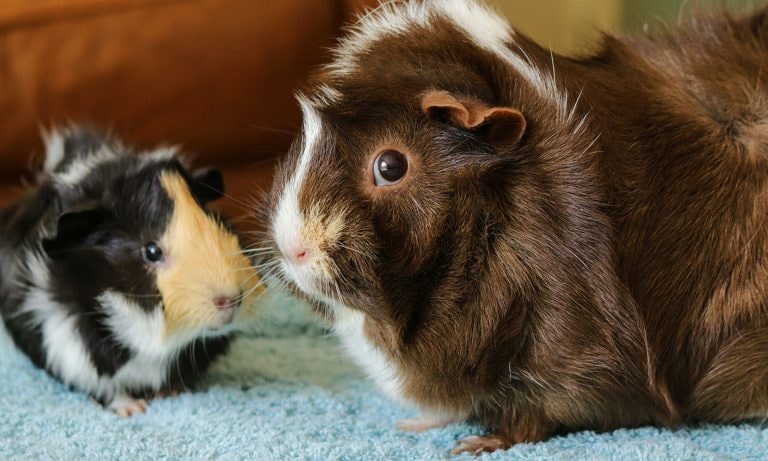So, you’ve decided to add a guinea pig (or maybe a number of guinea pigs!) to your family. Now what? While these small animals may be a little less needy than other, larger pets like dogs, their care still requires thought and attention. First up: Survey your home and find the best place for a guinea pig cage.
Believe it or not, the wrong cage placement could negatively affect your guinea pig’s well-being and even lead to health issues for your new piggy—and that’s the last thing you want. Consider the following seven factors when deciding on an ideal guinea pig cage location in your home.
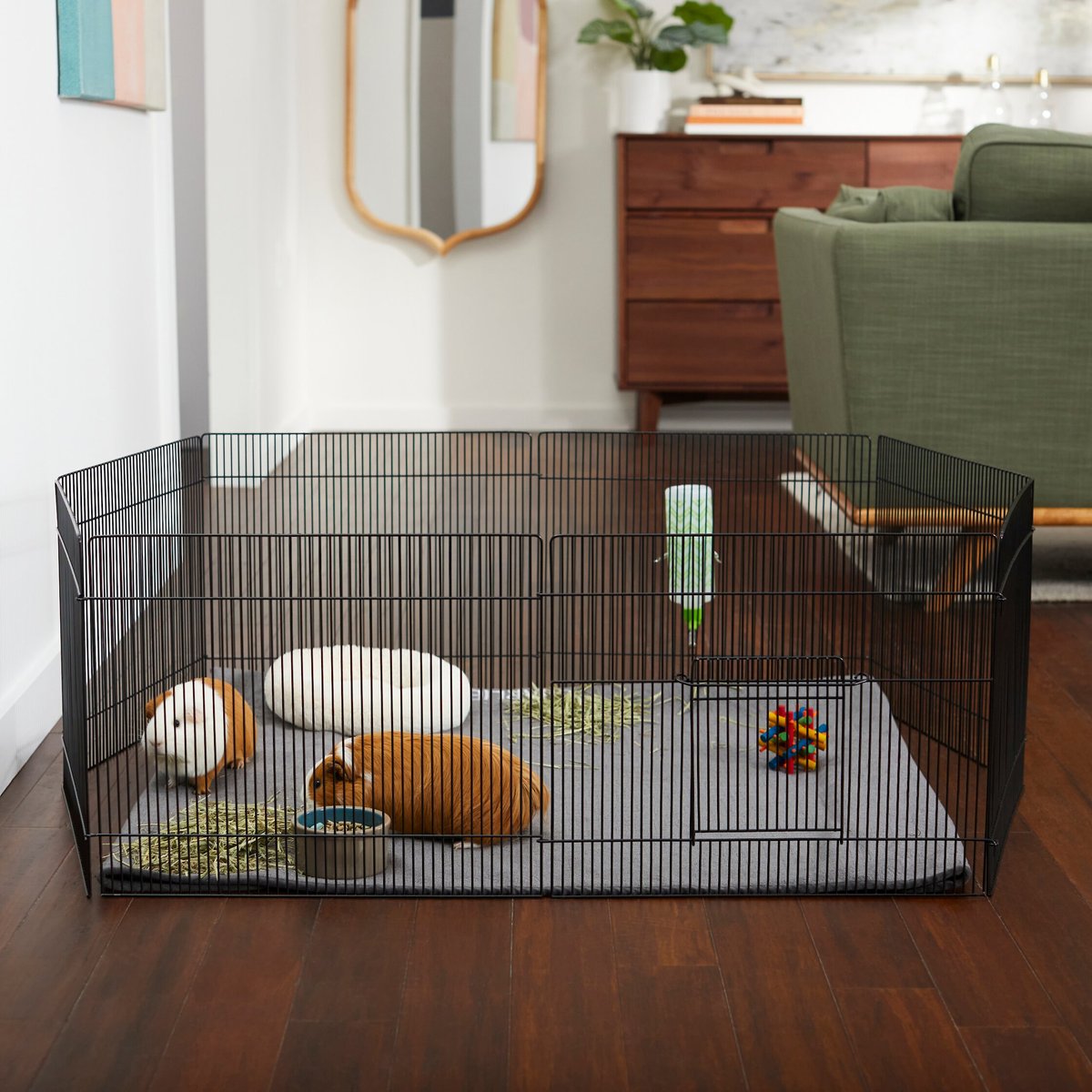
1Ensure a Draft-Free Living Space
2Choose a Bright Room
3Be Mindful of Room Temperature
The room should have a stable temperature range of 65 to 75 degrees Fahrenheit. At 85°F or higher, your guinea pig is likely to die from heat stroke. (For reference, a typical garage temperature exceeds 85°F during summer.)
Most exotic small animals, including guinea pigs, are more at risk for heat stroke than are dogs or cats. They cannot sweat and, unlike dogs, piggies cannot pant to eliminate excess heat. Additionally, their thick coat doesn’t allow them to release heat well.
Think of it this way: If it’s too hot or cold for you, it’s too hot or cold for a guinea pig.
4Make Sure the Humidity Is Low
Don’t house a guinea pig in a room with high humidity or fluctuations in humidity. Humidity is just as bad for your guinea pig as drafts are.
So, avoid areas that are close to showers and laundry rooms. Basements with acceptable, stable humidity and indirect light can be considered.
5Choose a Living Area Near Family Activity
It is critically important to the long-term health and happiness of your guinea pig that you place their cage central to family activity or at the immediate periphery. The guinea pig should be part of family life, even if they are designated as one person’s pet. Guinea pigs are social creatures and they need frequent interactions with their pet parents.
The best location is an area near the kitchen or dining room, where there is frequent family traffic and time spent hanging out. When near your own source of food, the guinea pigs will help remind you when they want their guinea pig food as well as attention. You’ll have easy access to your pet without even thinking about it, and as such, you will monitor behavior more easily, clean the cage more often and interact with your guinea pig more frequently because they’re nearby.
The commonly used living areas in your home, such as the living room and the family room, can also make good locations. Do not, however, put cages in children’s bedrooms. It isolates the piggy; plus, children should be supervised when handling these small pets.
6Don’t Place Your Piggies on the Floor
Putting the guinea pig’s cage on the floor is off limits. Here why:
- It could scare them: You are a walking giant to them when they are on the floor. When they’re down low, you are scarier, and it is harder for them to be comfortable with you.
- It could stress them out: Footsteps, jumping, running, moving things around, cleaning and vacuuming all create more stress for the cavies when they are on the floor. Guinea pigs feel the vibrations from these activities more strongly when their cages are placed on the floor.
- It’s easy access for kids—and accidents: Supervise children when they play with and handle guinea pigs. If guinea pigs are on the floor, it’s too easy for children to get to them and too easy for toy and play accidents to happen.
- It could cause an infection: Drafts are more noticeable on the floor and can cause upper respiratory infections.
- It’s dusty down there: Floors are dusty and the more dust-free your guinea pig’s environment, the better.
- It’s harder to pet them: It is not as easy to walk by, reach in and pet your cavies when they are on the floor.
- It’s harder to care for them: If feeding them, cleaning them and changing their water bottle are not extremely easy to do, these important tasks can be overlooked.
7Avoid Unusually Loud Spots
These small pets are sensitive to loud noises.
While your guinea pig should live in an area where you spend a lot of time or pass through often, you don’t want their cage setup to be located near anything too loud, like an air conditioner, heater, loud-playing TV or stereo.
Additional Tips for Creating the Ideal Guinea Pig Home
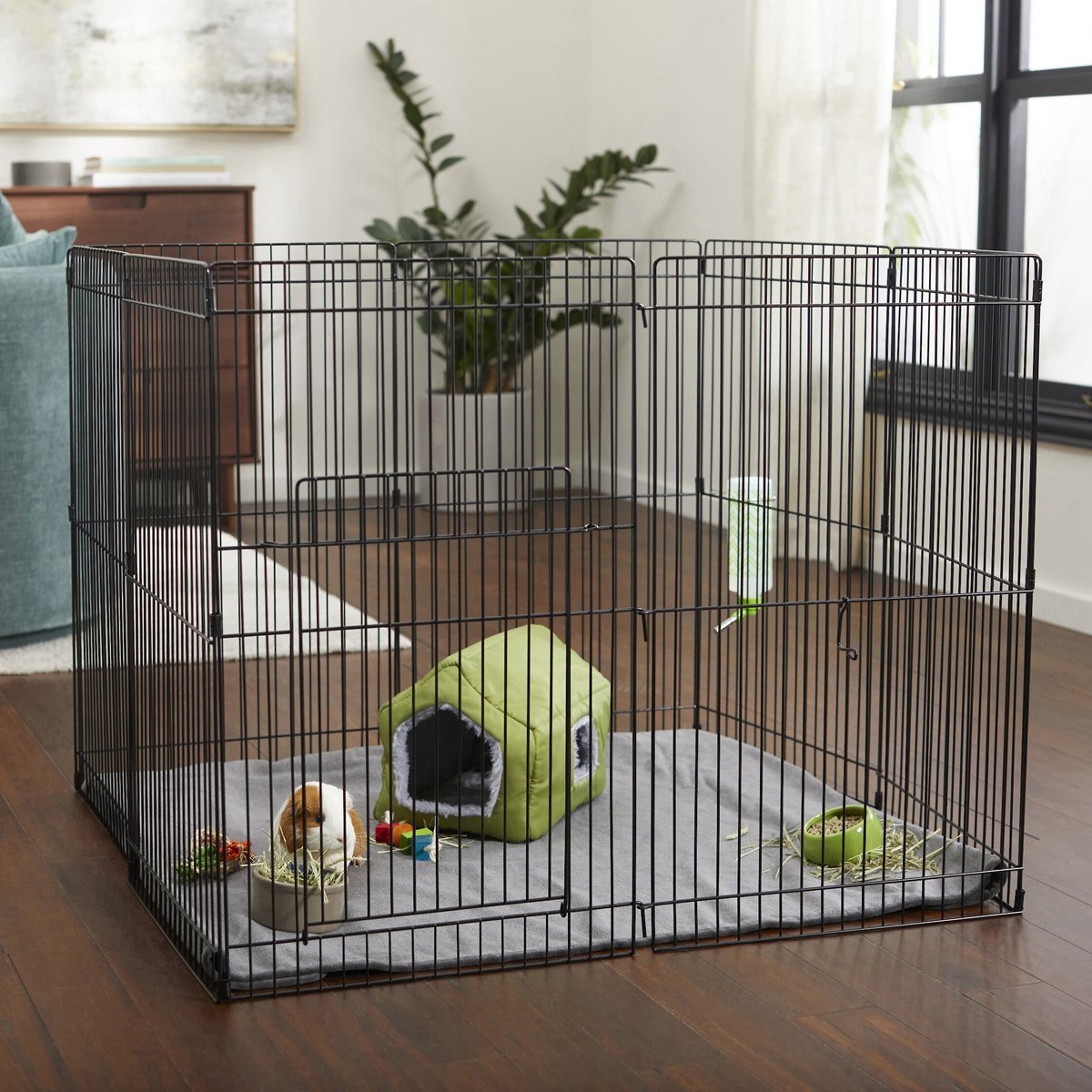
Cage Size and Specifics
Guinea pig parents should be aware of how much space their small pet requires to remain comfortable, according to Dr. Witherell:
- Guinea pigs don’t require lots of space—only about 8 square feet, to be exact. (This is per guinea pig. So, if you have two, double it.)
- The cage should be a minimum of 50 x 24 inches.
- If you choose a topless guinea pig cage, ensure the wire sides are at least 10 inches high.
- The bars should be spaced about 1 inch apart.
Finally, the flooring of your guinea pig’s enclosure should be solid (so, avoid grates or wire) to prevent harming your piggy’s tiny feet.
It’s not necessary to use a divider if you house more than one guinea pig together. Just don’t place two unaltered males in the same living space, as they may become aggressive and fight.
Also note that while guinea pig hutches are an option, cages provide better ventilation. Another option is a C&C cage, which stands for cubes (the grids assembled to create the structure of the cage) and coroplast (the plastic base used in the cage). This is a good alternative to a cage as it tends to be larger. C&C cages are also modular, allowing you to change the configuration or shape.
Guinea Pig Bedding
The best choice for guinea pig bedding is paper bedding, as it’s non-toxic, safe for their feet and easy to clean up. It’s also absorbent, which means it will help keep the cage more clean and dry—making a healthier overall environment for your pet piggy. You should avoid wood shavings or chips, as they can cause health issues, specifically respiratory problems. Cedar wood shavings release toxic aromatic compounds.
More about caring for your guinea pig:
Share:
